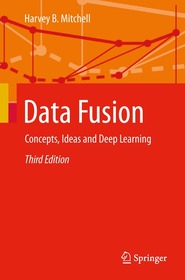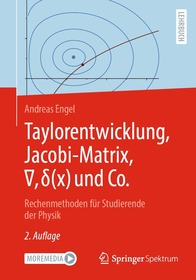
Data Fusion
Concepts, Ideas and Deep Learning
-
12% KEDVEZMÉNY?
- A kedvezmény csak az 'Értesítés a kedvenc témákról' hírlevelünk címzettjeinek rendeléseire érvényes.
- Kiadói listaár EUR 106.99
-
44 374 Ft (42 261 Ft + 5% áfa)
Az ár azért becsült, mert a rendelés pillanatában nem lehet pontosan tudni, hogy a beérkezéskor milyen lesz a forint árfolyama az adott termék eredeti devizájához képest. Ha a forint romlana, kissé többet, ha javulna, kissé kevesebbet kell majd fizetnie.
- Kedvezmény(ek) 12% (cc. 5 325 Ft off)
- Kedvezményes ár 39 049 Ft (37 190 Ft + 5% áfa)
Iratkozzon fel most és részesüljön kedvezőbb árainkból!
Feliratkozom
44 374 Ft

Beszerezhetőség
Még nem jelent meg, de rendelhető. A megjelenéstől számított néhány héten belül megérkezik.
Why don't you give exact delivery time?
A beszerzés időigényét az eddigi tapasztalatokra alapozva adjuk meg. Azért becsült, mert a terméket külföldről hozzuk be, így a kiadó kiszolgálásának pillanatnyi gyorsaságától is függ. A megadottnál gyorsabb és lassabb szállítás is elképzelhető, de mindent megteszünk, hogy Ön a lehető leghamarabb jusson hozzá a termékhez.
A termék adatai:
- Kiadás sorszáma 3
- Kiadó Springer Berlin Heidelberg
- Megjelenés dátuma 2025. december 28.
- Kötetek száma 1 pieces, Book
- ISBN 9783662710227
- Kötéstípus Keménykötés
- Terjedelem350 oldal
- Méret 235x155 mm
- Nyelv angol
- Illusztrációk XV, 350 p. 83 illus., 1 illus. in color. Illustrations, black & white 700
Kategóriák
Hosszú leírás:
"
This textbook provides a comprehensive introduction to the concepts and ideas of data fusion. It is an extensively revised third edition of the author's book which was originally published by Springer-Verlag in 2007 (first edition) and 2012 (second edition).
The main changes in the new edition are:
- NEW MATERIAL. A new chapter on Deep Learning and significant amounts of new material in most chapters in the book
- SOFTWARE CODE. Where appropriate we have given details of both Matlab and Python code which may be downloaded from the internet.
- FIGURES. More than 40 new figures have been added to the text.
The book is intended to be self-contained. No previous knowledge of data fusion is assumed, although some familiarity with basic tools of linear algebra, calculus and simple probability is recommended.
Although conceptually simple, the study of data fusion presents challenges that are unique within the education of the electrical engineer or computer scientist. To become competent in the field, the student must become familiar with tools taken from a wide range of diverse subjects including deep learning, signal processing, statistical estimation, tracking algorithms, computer vision and control theory. All too often, the student views data fusion as a miscellaneous assortment of different processes which bear no relationship to each other. In contrast, in this book the processes are unified by using a common statistical framework. As a consequence, the underlying pattern of relationships that exists between the different methodologies is made evident.
The book is illustrated with many real-life examples taken from a diverse range of applications and contains an extensive list of modern references.
" TöbbTartalomjegyzék:
1 Introduction.- 2 Sensors.- 3 Architecture.- 4 Common Representational Format.- 5 Deep Learning.- 6 Spatial Alignment.- 7 Temporal Alignment.- 8 Semantic Alignment.- 9 Radiometric Normalization.- 10 Bayesian Inference.- 11 Parameter Estimation.- 12 Robust Statistics.- 13 Sequential Bayesian Inference and Kalman Filters.- 14 Bayesian Decision Theory.- 15 EnsembleLearning.- Index.
Több





